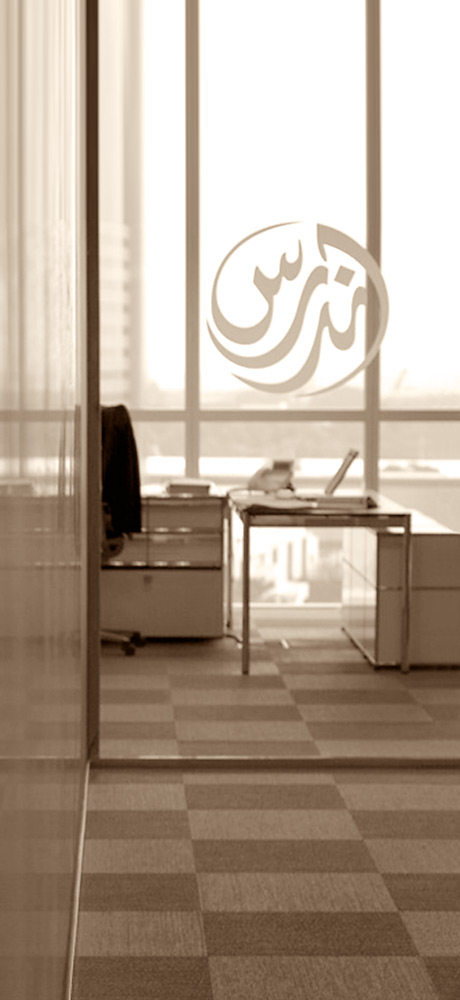Are you considering purchasing a property in the Emirate of Dubai? As a foreign investor, it is particularly important to conduct a detailed market analysis and verify the owner or developer of the property. Furthermore, it is essential to be aware of the typical contractual documents and common payment methods. In the following, we will inform you about the most significant local particularities.
1. Who is entitled to purchase real estate in the Emirate of Dubai?
In principle, individuals of all nationalities may acquire real estate in the Emirate of Dubai.
The same generally applies to legal entities domiciled in the mainland of the United Arab Emirates ("UAE") or in certain free zones of the UAE. Foreign companies, however, are currently not entitled to purchase real estate in the Emirate of Dubai.
2. Is the acquisition of real estate limited to certain areas?
Foreign nationals and UAE companies with foreign shareholding are entitled to acquire real estate in certain districts of Dubai only. These so-called freehold areas include, for example, Dubai Marina, The Palm Jumeirah, Arabian Ranches and Downtown.
3. What rights does a foreign real estate buyer acquire?
Depending on the project, either a freehold right or a long-term leasehold right is linked to the acquisition of real estate.
The holder of a freehold right is the unrestricted owner of the land and the structures built on it. This means that he can freely dispose of the land, for example, sell, encumber or bequeath it. The only restrictions are public order and the rights of third parties. The freehold right is not limited in terms of time.
In contrast, long-term leasehold is a right derived from freehold. The main difference is its time limitation. In the UAE, the period for long-term leasehold lasts up to 99 years, depending on the project. The rent is generally paid in full at the beginning of the lease period.
4. Which factors should be considered when making a purchase decision?
Even if the projects offered by developers or brokers sound consistently appealing, prospective buyers should not be tempted to buy because of impressive building animations in front of an imposing backdrop or high-yield promises. Information in sales materials is not binding in most cases. Legal claims can usually only be derived from the actual sale and purchase contract. A well-founded market analysis and a detailed review of the contractual documents before purchasing a property are therefore essential.
With regard to the cost calculation, in addition to the actual purchase price, the fees of the Dubai Land Department ("DLD"), i.e. the land registry, the broker fees and the costs for the potential issuance and translation of required documents should be taken into account.
Once the intention to purchase a particular property becomes more specific, the property should be scrutinised with regard to the seller's ownership status, freedom from encumbrances and proper registration of the project, the developer, the broker office and the broker.
Finally, the buyer has to ensure that he is in a position to fulfil the requirements for acquiring the property. For example, he must be able to pay the purchase price in the agreed form. Usually, the seller demands payment by bank-guaranteed cheque, so-called manager's cheque. If the buyer is not personally present at the appointment for transfer of ownership, he must also ensure that his representative is furnished with a power of attorney that meets the requirements of the DLD in terms of content and form.
5. How is a real estate purchase actually conducted?
The process of acquiring real estate in the Emirate of Dubai differs depending on whether the property is purchased directly from the developer, i.e. in the primary market, or from a previous owner, i.e. in the secondary market.
a. Purchase in the Primary Market
In case the developer offers the property directly, the buyer usually is required to first sign a reservation form and make a down payment on the purchase price.
The developer subsequently submits a comprehensive purchase contract, the so-called Sale and Purchase Agreement ("SPA"), to the buyer for signature. The individual clauses of the SPA are generally non-negotiable. Nevertheless, the buyer should, if possible, obtain a sample of the SPA before making the down payment in order to be informed about the rights and obligations that will apply between the parties in the future and, in case of doubt, to be able to refrain from concluding the contract without losing the down payment. In particular, aspects such as the specification of the property and its fittings, the terms of payment of the purchase price, the completion date and the rights of the buyer in the event of default as well as the warranty rights are relevant.
The further procedure depends mainly on whether the property is still under construction or has already been completed.
If the property is still under construction, i.e. if it is acquired off-plan, it is essential that the developer promptly arranges for the buyer to be entered into the Interim Property Register at the DLD. This entry is commonly referred to as "Oqood" and serves as preliminary proof of ownership. Outstanding instalments of the purchase price have to be paid into the escrow account established specifically for the project and in accordance with the payment schedule set forth in the SPA. After completion of the property and making all remaining payments, the DLD will issue the title deed to the buyer at the request of the developer.
Where an already completed property is purchased directly from the developer, the buyer receives the title deed in his name immediately upon fulfilment of his contractual obligations.
b. Purchase in the Secondary Market
Where the property is not purchased from the developer itself, but from a previous owner, the acquisition process is not handled by the developer. Instead, a Real Estate Registration Trustee Office ("Trustee Office") must be involved, i.e. an office which is affiliated with the DLD.
It is mandatory to use the standard Form F issued by the DLD for the contract between the seller and the buyer. However, since this document regulates the transaction in a rudimentary manner only and leaves little room for individual adjustments, Form F should be supplemented by an addendum. This addendum can be freely negotiated by the parties.
Once Form F, including the addendum, has been signed and all other documents required for the real estate transaction are available, the transfer of ownership is carried out in an appointment at a Trustee Office.
The Trustee Office verifies the completeness, authenticity, form and content of the documents submitted as well as the identity and authority to act of the persons present. If there are no objections, the Trustee Office electronically transmits the documents to the DLD for final review. After the DLD has given its consent to the transfer of title, the Trustee Office passes on the purchase price previously received from the buyer to the seller and, in turn, hands over the title deed now reflecting the buyer's name to the buyer.
6. Practical Tips
In order to successfully purchase real estate in the Emirate of Dubai, a buyer should adhere to the following steps:
- Conduct a thorough market analysis.
- Choose established developers, broker office and brokers who are properly registered with the relevant authorities.
- Review the SPA and other documents before signing.
- Calculate all expenses, including those that will incur in the future.
- Ensure that you are able to sign the documents in the prescribed form and make payments in the agreed time and manner.
- Make payments only to the authorised recipients and instalments of the purchase price only into an escrow account.

